Maths rebranded: London’s Science Museum opens Zaha Hadid-designed gallery
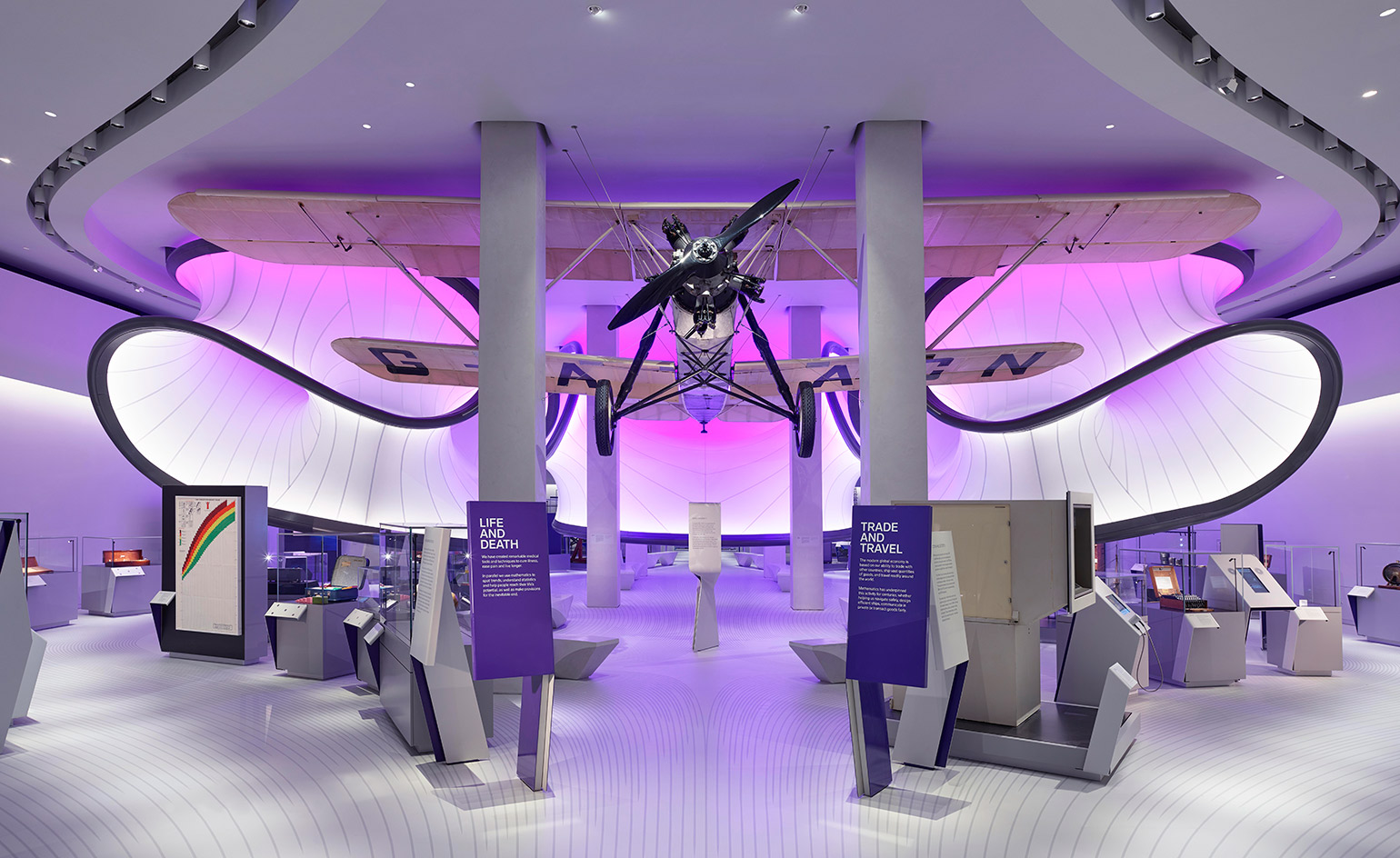
A new gallery designed by Zaha Hadid Architects, 'Mathematics: The Winton Gallery', has opened at London’s Science Museum. Inspired by aerodynamics – with the revolutionary Handley Page ‘Gugnunc’ aeroplane soaring through its midst – the gallery architecture descends down onto the displays, its swooping voluminous curves wrapping up the objects into a convincing case history on how mathematics is the pivot of our human world.
The architects worked with curator David Rooney to design the gallery around 100 artefacts selected from the science, technology, engineering and mathematics collections. A symmetrical pod-like structure made of fabric with a frame of powder-coated aluminium engulfs existing columns in the gallery, creating a central seating area and folding itself around display cases all lit by a soft and unearthly glow, which fades from yellow to pink to light purple.
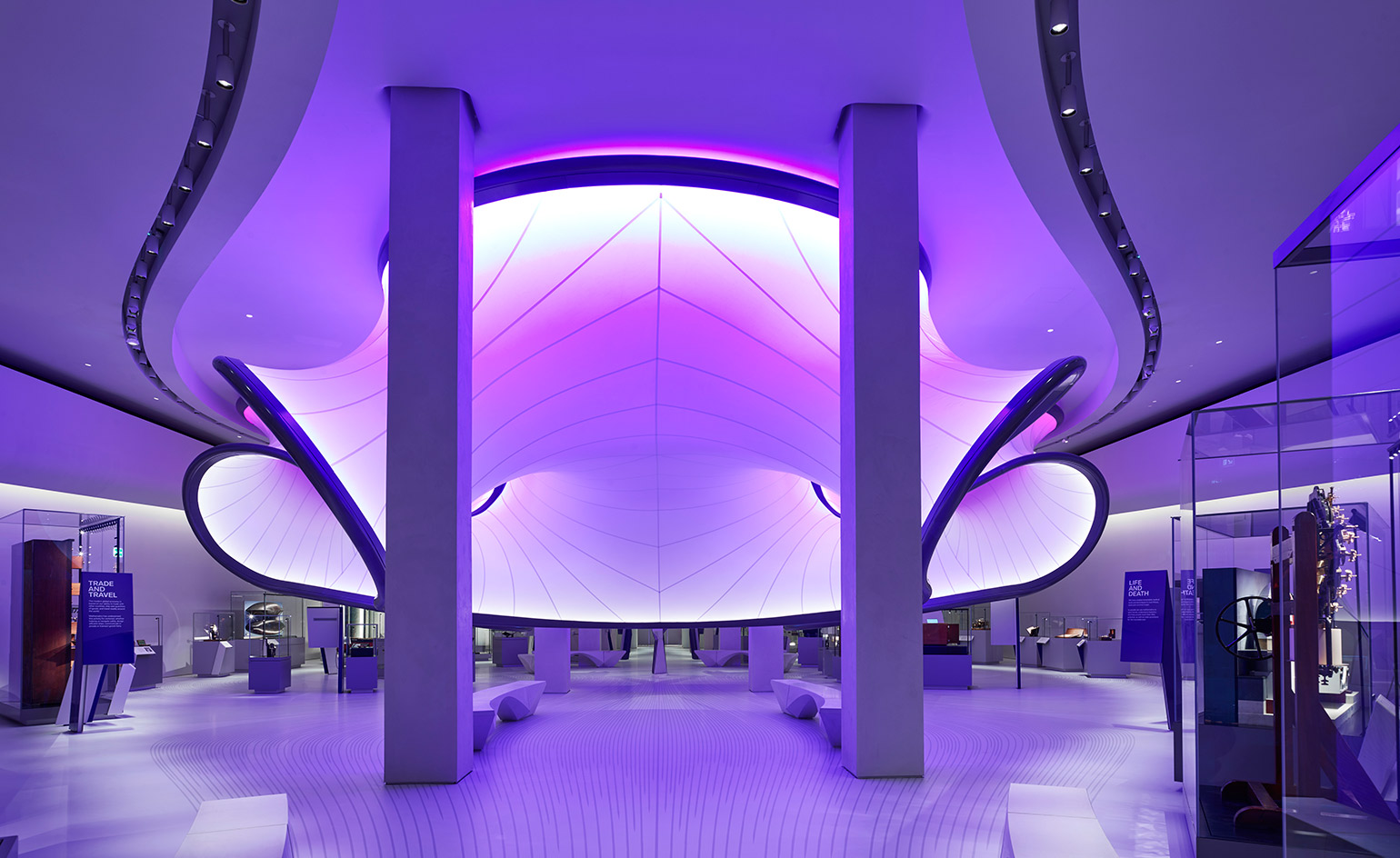
An interior view of the gallery
The form follows the flow of air that would have swirled around the Gugnunc, which was built in 1929 in Britain – then the safest aeroplane for human travel, playing a crucial role in opening up accessible aviation to the world.
Other tools enveloped in the architecture include a 17th century Islamic astrolabe and Wisard pattern-recognition machine – an early artificial intelligence device. Both help us understand how maths has been intertwined into the human experience over the past four centuries, from travel to astronomy to psychology – enhancing our lives and predicting our future while slowly counting the days and years until we die.
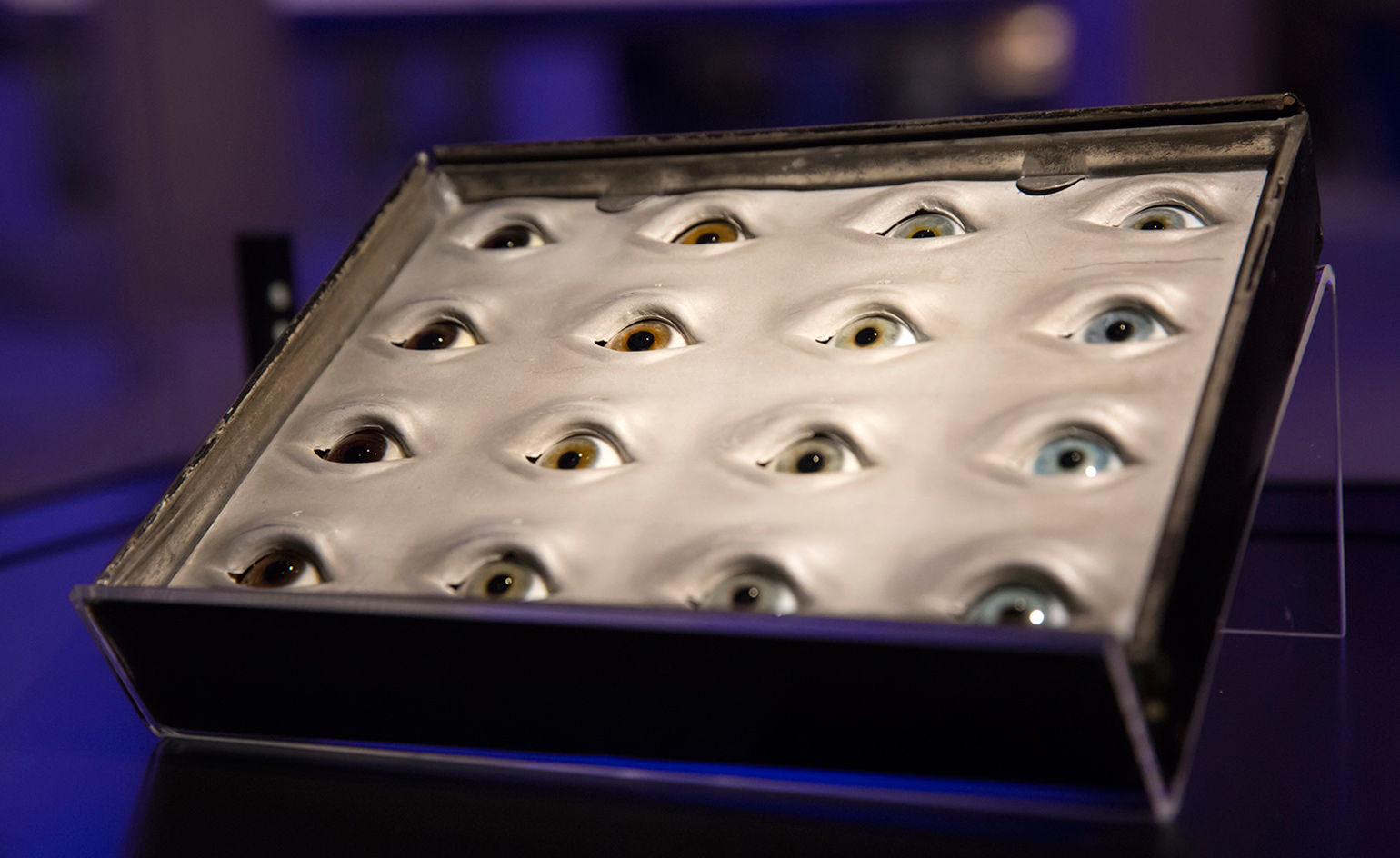
A box of glass eyes used by Francis Galton in his 1884 Anthropometric Laboratory, where he devleoped his theories in eugenics
The architects used computational fluid dynamics to translate the equations of airflow into the shapes of the forms, and robotic manufacture was used to produce the curved benches. Mathematics was a subject that was significant to the late Dame Zaha Hadid, who studied it at university, experimenting with geometry both technically and creatively.
Presenting maths in a new, almost alien, light, ’Mathematics: The Winton Gallery’ is the world’s only permanent public exhibition designed by Zaha Hadid Architects. Thanks to principal support from philanthropists David and Claudia Harding, as well as sponsors Samsung and MathWorks, the gallery is free for all to visit.
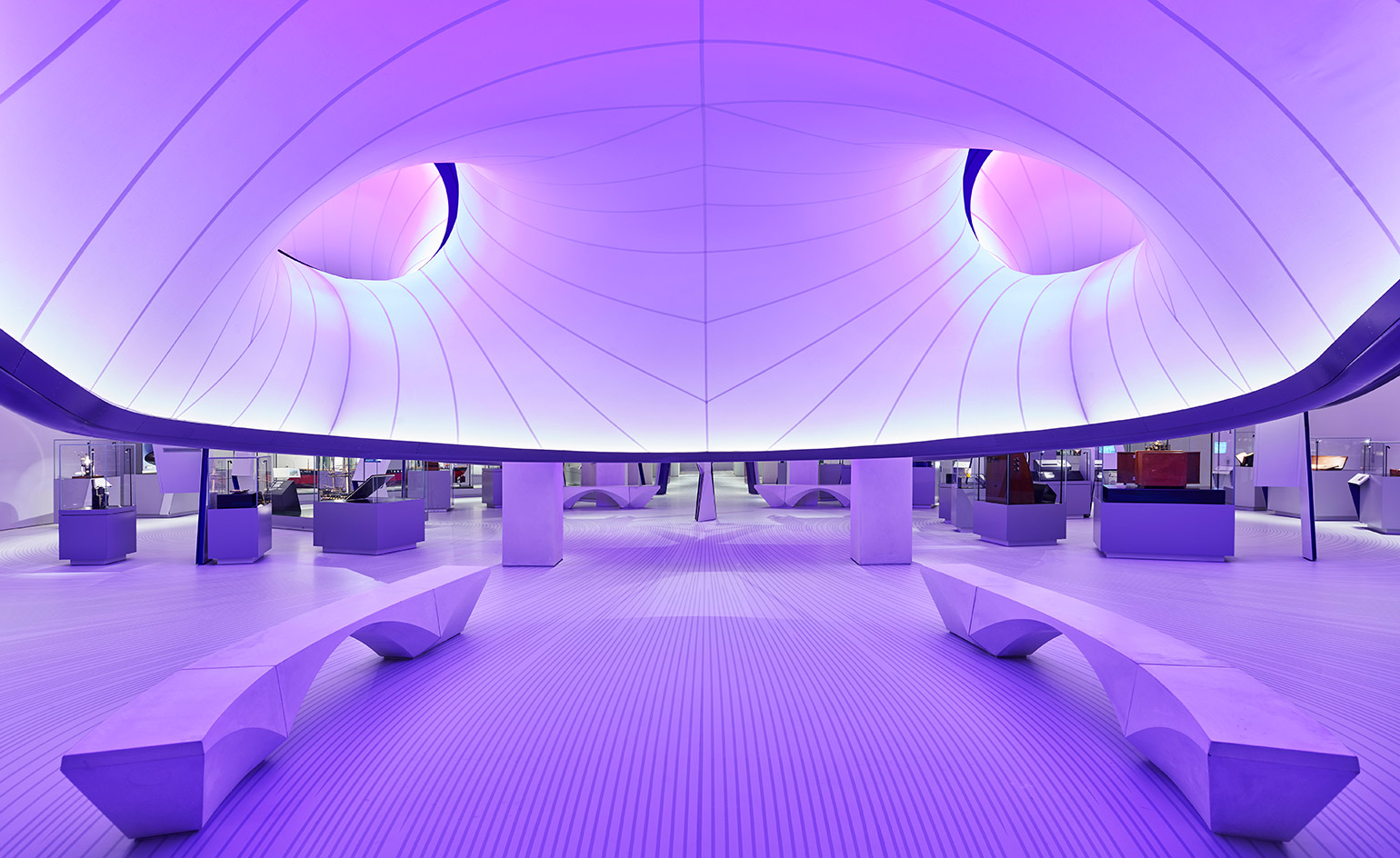
The gallery presents 100 artefacts from the museum's science, technology, engineering and mathematics collections
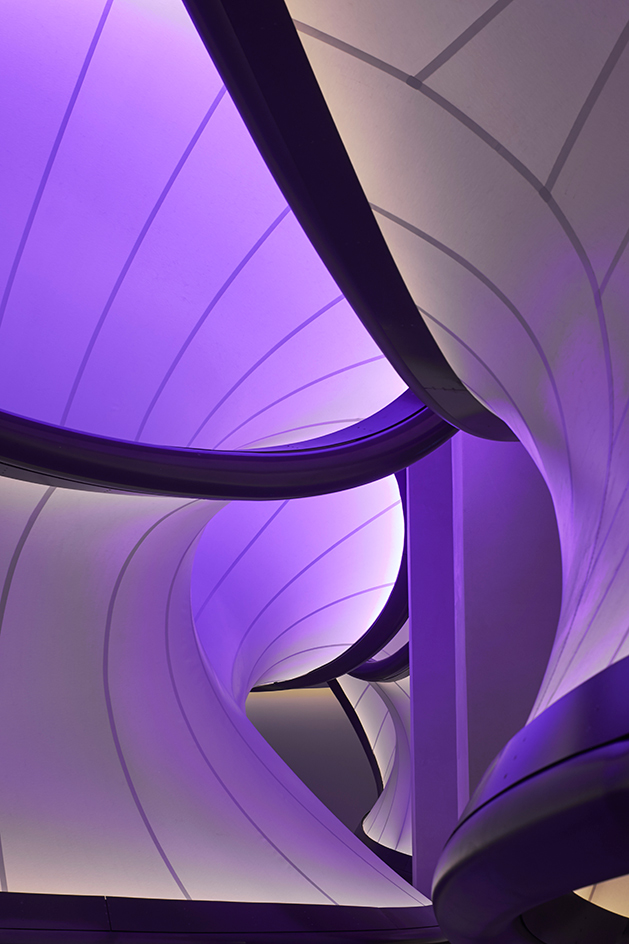
The exhibition has been curated by David Rooney, who recently authored Mathematics: How It Shaped Our World to accompany the new opening
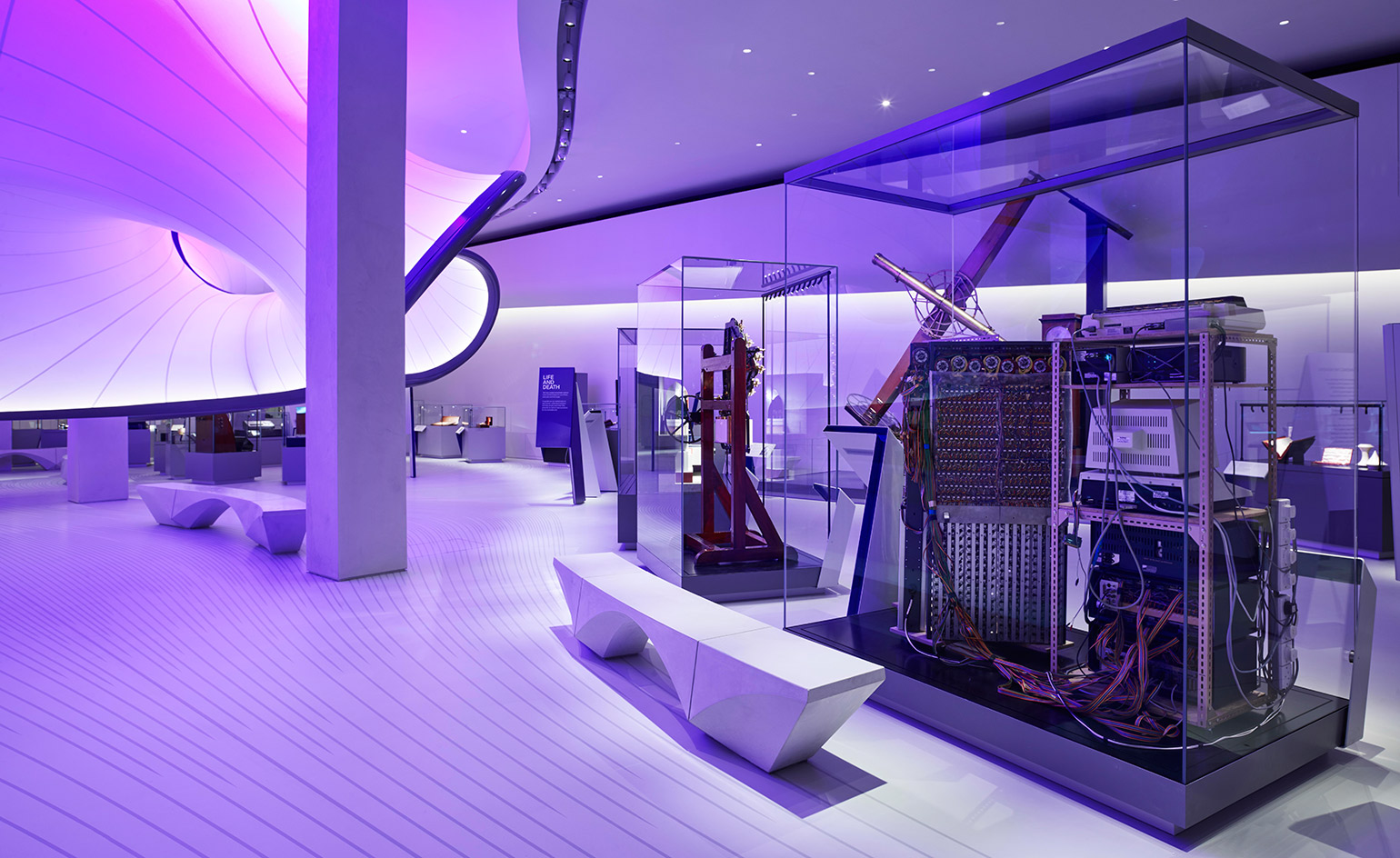
The range of objects in the gallery spans classical architecture to furniture design to an early example of the code-breaking Enigma machine. Pictured, Shizuo Ishiguro's Electronic North Sea Model, 1960
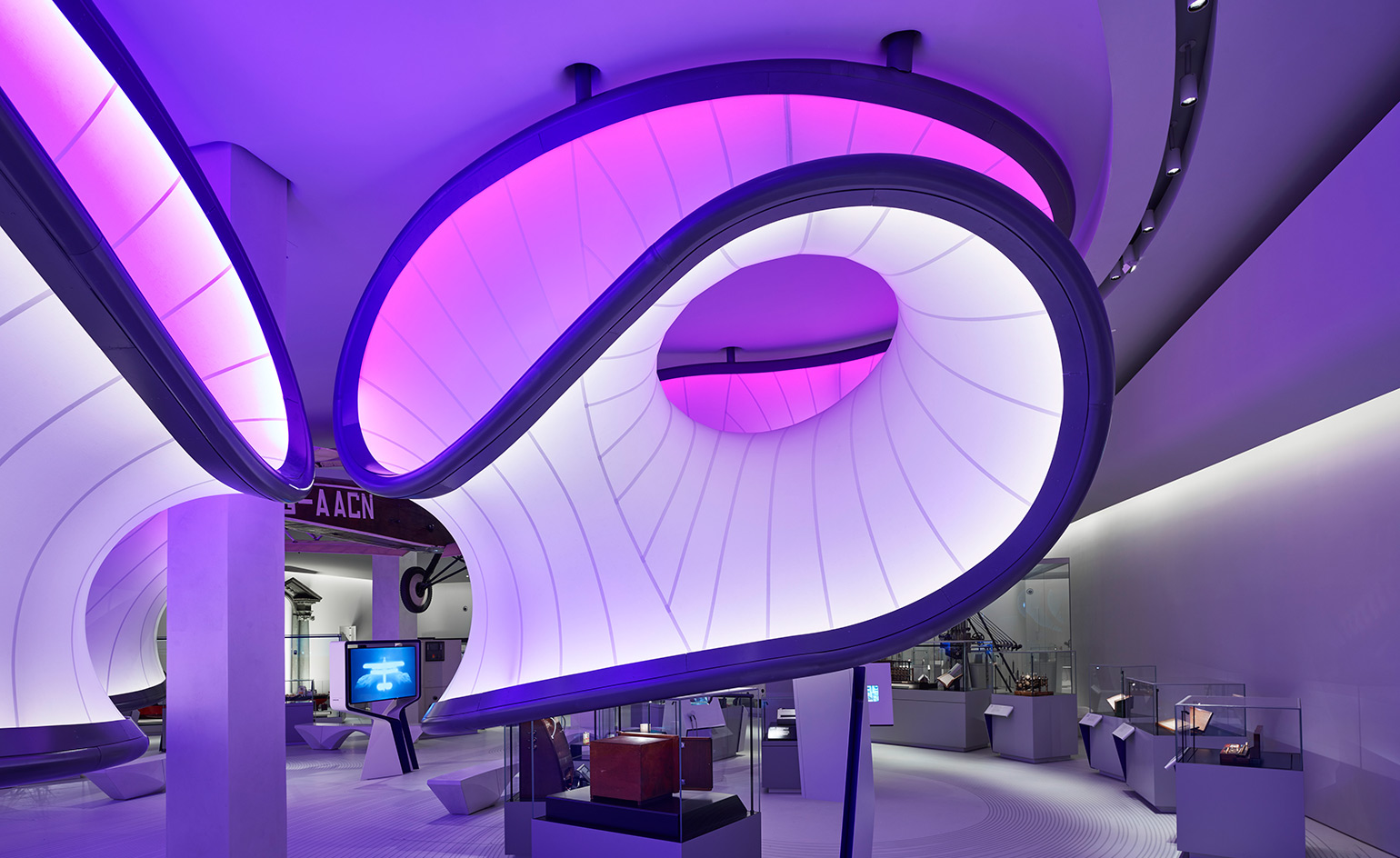
This symmetric pod-like structure is a solid form of the air that would have flowed around the Handley Page ‘Gugnunc’ aeroplane, built in 1929
INFORMATION
For more information, visit the Science Museum website and the Zaha Hadid Architects website
Wallpaper* Newsletter
Receive our daily digest of inspiration, escapism and design stories from around the world direct to your inbox.
ADDRESS
Science Museum
Exhibition Road
London SW7 2DD
Harriet Thorpe is a writer, journalist and editor covering architecture, design and culture, with particular interest in sustainability, 20th-century architecture and community. After studying History of Art at the School of Oriental and African Studies (SOAS) and Journalism at City University in London, she developed her interest in architecture working at Wallpaper* magazine and today contributes to Wallpaper*, The World of Interiors and Icon magazine, amongst other titles. She is author of The Sustainable City (2022, Hoxton Mini Press), a book about sustainable architecture in London, and the Modern Cambridge Map (2023, Blue Crow Media), a map of 20th-century architecture in Cambridge, the city where she grew up.
-
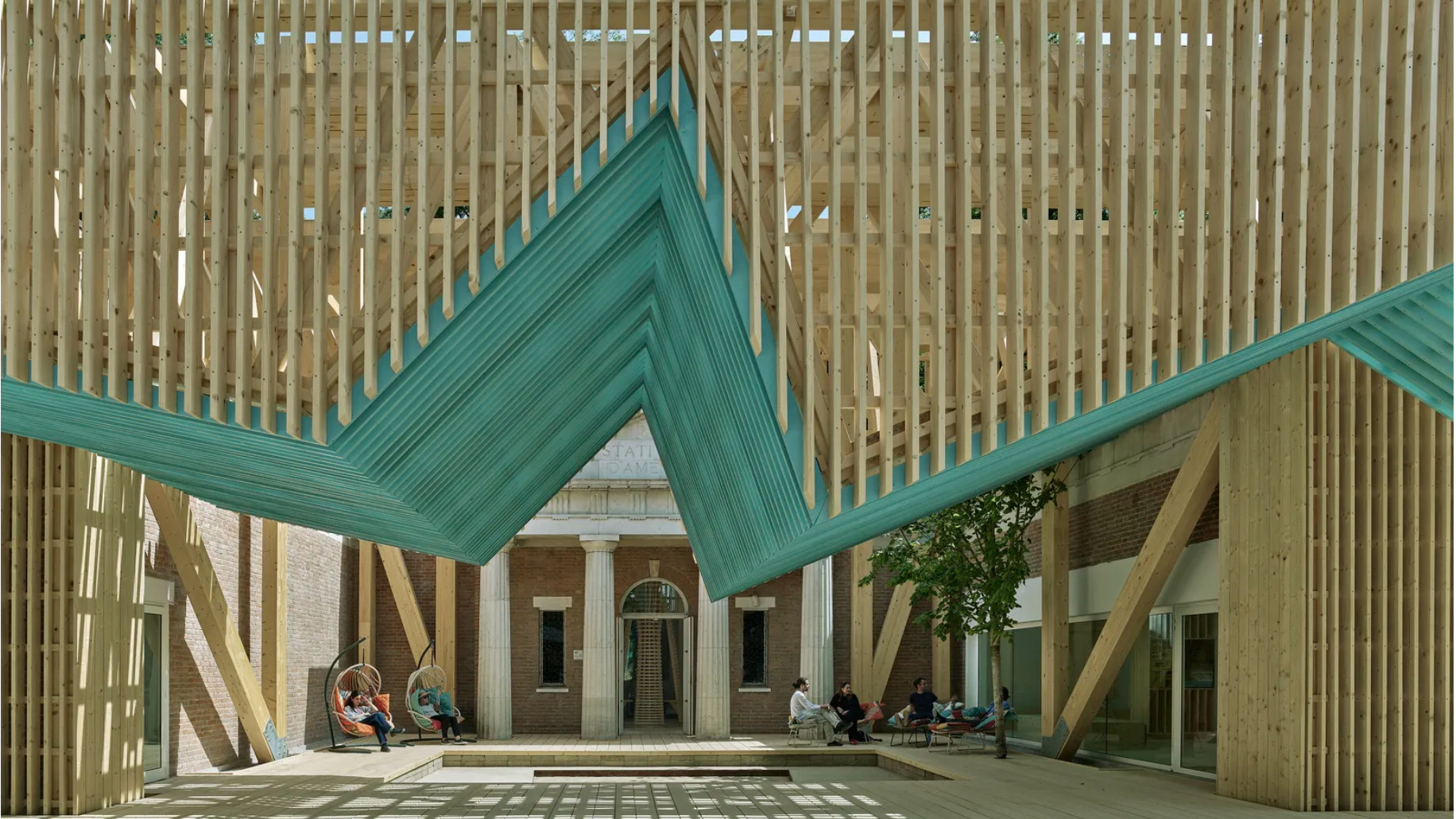 This year's US Pavilion asks visitors to gather round
This year's US Pavilion asks visitors to gather round‘PORCH: An Architecture of Generosity’ is a celebration of togetherness
-
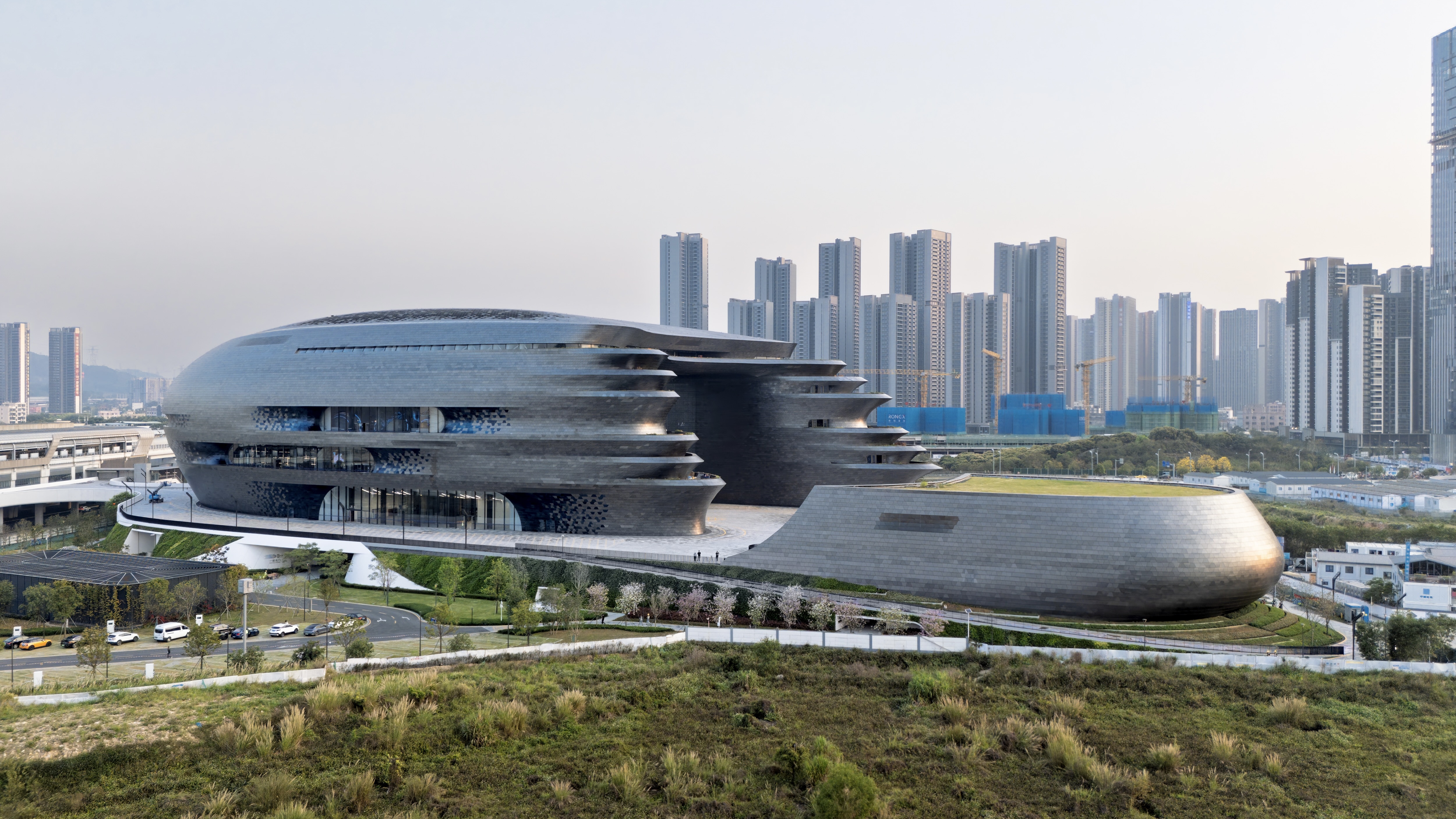 Zaha Hadid Architects’ spaceship-like Shenzhen Science and Technology Museum is now open
Zaha Hadid Architects’ spaceship-like Shenzhen Science and Technology Museum is now openLast week, ZHA announced the opening of its latest project: a museum in Shenzhen, China, dedicated to the power of technological advancements. It was only fitting, therefore, that the building design should embrace innovation
-
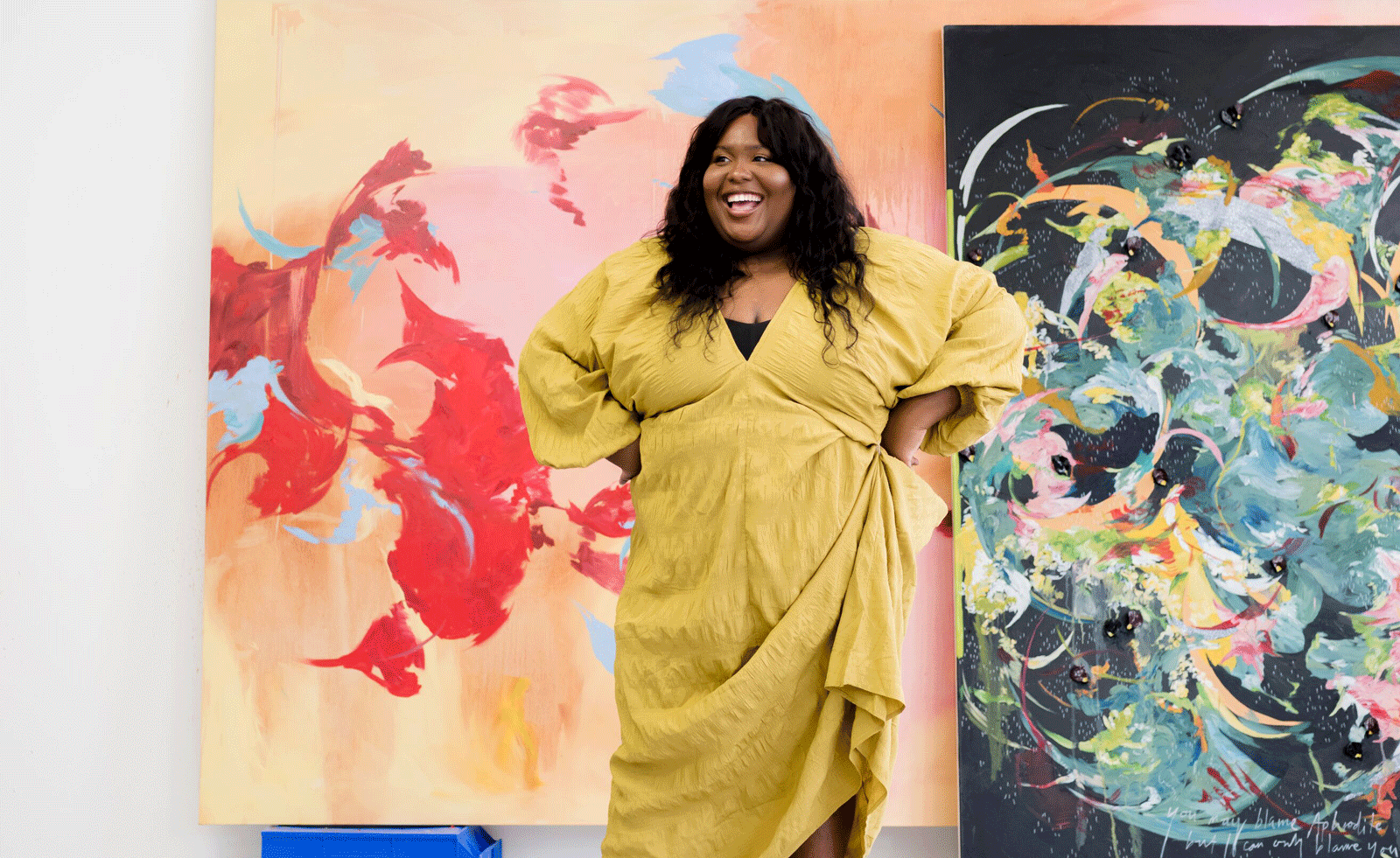 ‘The work is an extension of myself’: Michaela Yearwood-Dan on her debut show at Hauser & Wirth
‘The work is an extension of myself’: Michaela Yearwood-Dan on her debut show at Hauser & WirthLondon-based artist Michaela Yearwood-Dan continues her rapid rise, unveiling monumental new paintings in ‘No Time for Despair’
-
 ‘The work is an extension of myself’: Michaela Yearwood-Dan on her debut show at Hauser & Wirth
‘The work is an extension of myself’: Michaela Yearwood-Dan on her debut show at Hauser & WirthLondon-based artist Michaela Yearwood-Dan continues her rapid rise, unveiling monumental new paintings in ‘No Time for Despair’
-
 The UK AIDS Memorial Quilt will be shown at Tate Modern
The UK AIDS Memorial Quilt will be shown at Tate ModernThe 42-panel quilt, which commemorates those affected by HIV and AIDS, will be displayed in Tate Modern’s Turbine Hall in June 2025
-
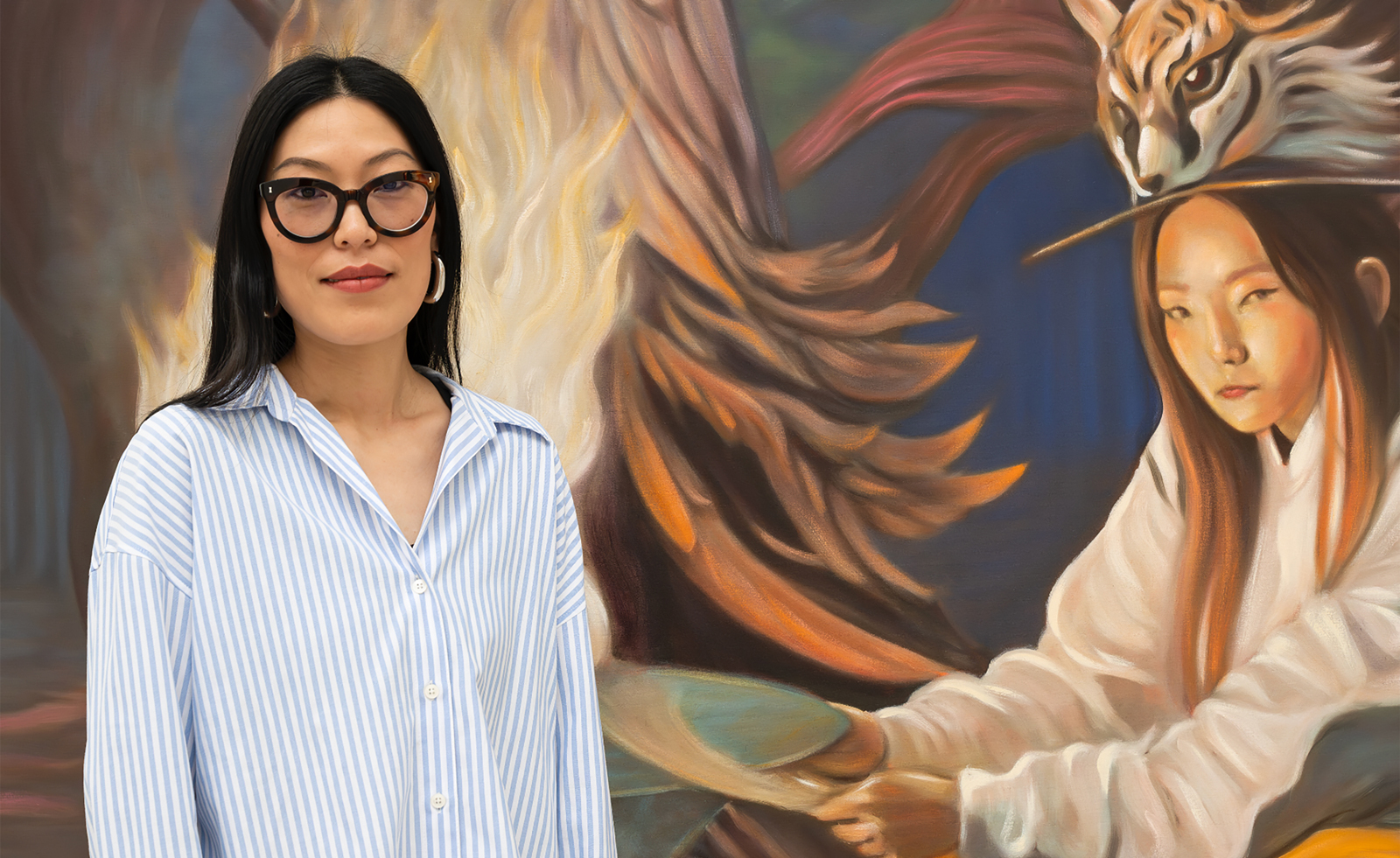 Meet the Turner Prize 2025 shortlisted artists
Meet the Turner Prize 2025 shortlisted artistsNnena Kalu, Rene Matić, Mohammed Sami and Zadie Xa are in the running for the Turner Prize 2025 – here they are with their work
-
 ‘Humour is foundational’: artist Ella Kruglyanskaya on painting as a ‘highly questionable’ pursuit
‘Humour is foundational’: artist Ella Kruglyanskaya on painting as a ‘highly questionable’ pursuitElla Kruglyanskaya’s exhibition, ‘Shadows’ at Thomas Dane Gallery, is the first in a series of three this year, with openings in Basel and New York to follow
-
 The art of the textile label: how British mill-made cloth sold itself to Indian buyers
The art of the textile label: how British mill-made cloth sold itself to Indian buyersAn exhibition of Indo-British textile labels at the Museum of Art & Photography (MAP) in Bengaluru is a journey through colonial desire and the design of mass persuasion
-
 Artist Qualeasha Wood explores the digital glitch to weave stories of the Black female experience
Artist Qualeasha Wood explores the digital glitch to weave stories of the Black female experienceIn ‘Malware’, her new London exhibition at Pippy Houldsworth Gallery, the American artist’s tapestries, tuftings and videos delve into the world of internet malfunction
-
 Ed Atkins confronts death at Tate Britain
Ed Atkins confronts death at Tate BritainIn his new London exhibition, the artist prods at the limits of existence through digital and physical works, including a film starring Toby Jones
-
 Tom Wesselmann’s 'Up Close' and the anatomy of desire
Tom Wesselmann’s 'Up Close' and the anatomy of desireIn a new exhibition currently on show at Almine Rech in London, Tom Wesselmann challenges the limits of figurative painting